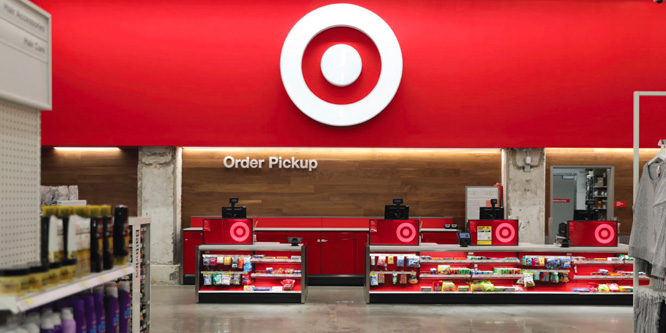
Photo: Target
April 27, 2020
Are Target’s skyrocketing online sales retail’s new normal?
In a financial update last week, Target detailed how its online sales accelerated and in-store sales softened as the coronavirus pandemic raced across the country.
Comp sales for the quarter-to-date have grown over seven percent with more than 100 percent growth in digital channels offsetting a slight decline in stores.
According to the monthly pattern:
- February: Total comps increased 3.8 percent with strength across categories. Late in the month, traffic and comps at both stores and online channels picked up as stockpiling began.
- March: An “even stronger surge” in traffic and sales occurred mid-March with the mix becoming heavily concentrated in essentials and food and beverage categories. With of shelter-in-place orders arriving later in the month, “trends in stores softened significantly while digital sales accelerated dramatically.”
- April: Early sales were similar to late March but “improved meaningfully” beginning April 15. Through April 23, comps increased more than five percent as a more than 275 percent hike in online comps offset a decline in the mid-teens at stores.
“Consumer behaviors continue to change dramatically, particularly as public health officials have told Americans to minimize their time in stores,” Target CEO Brian Cornell told reporters.
At the store level, the volume of order pickup during some weeks in April was up to seven times greater than normal. Some single days have been twice as high as Cyber Monday. On the Friday before Easter, Shipt, its same-day delivery service, did more volume than it typically does in a week.
In-store sales appear to be declining as the chain deals with restrictions on the number of shoppers and consumers’ increasing apprehension about going out in public. Mr. Cornell believes, however, that consumers seeking to reduce their outings will continue to come to Target’s locations for one-stop shopping and same-day pickup. Keeping stores operating also speeds online fulfillment, he said.
Target’s performance comes as surveys and retail traffic in recovering countries overseas indicates U.S. consumers will cautiously return to stores as restrictions ease.
The retailer also warned that higher labor costs, the sale of more low-margin items and write-downs of inventory in apparel and accessories would lead to slightly lower profits in the first quarter.
- Target Extends Enhancements to Pay and Benefits and Provides COVID-19 Business Update – Target
- Target’s soaring online growth suggests scared shoppers may not return when malls and department stores reopen – MarketWatch
- Target’s shares tumble as retailer says first-quarter profits will be hurt by higher costs – CNBC
- Target digital sales make significant gains because of COVID-19 demand, but in-store sales drop, driving shares down – USA Today
- First Insight: As Stores Reopen, Consumers Feel Least Safe Shopping in Malls, Safest Shopping in Grocery and Drug Stores – First Insight
- 4 reasons retail in the US won’t be bouncing back like in China – CNBC
- Changes In Grocery Shopping Habits During Covid-19 – C+R Research
- Germans aren’t shopping despite stores being open – experts explain why – CNBC
- ‘No lines, no crowds’ – Germans stay home as stores begin to reopen after coronavirus lockdown — CNBC
- Consumer Survey: COVID-19’s Impact on Food Purchasing, Eating Behaviors and Perceptions of Food Safety – Food Insight
Discussion Questions
DISCUSSION QUESTIONS: What lessons might be drawn from how Target is managing through the COVID-19 crises? Do you expect accelerating online and tempered in-store growth to show a similar pattern across other essential retailers in the months ahead?
Poll
BrainTrust
Carol Spieckerman
President, Spieckerman Retail
Jeff Sward
Founding Partner, Merchandising Metrics
Recent Discussions


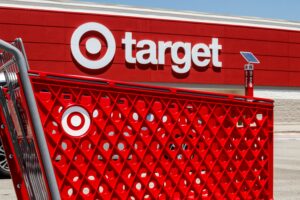
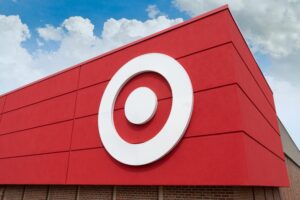
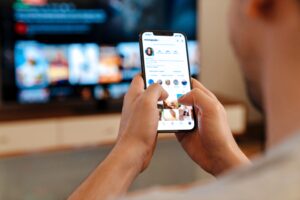
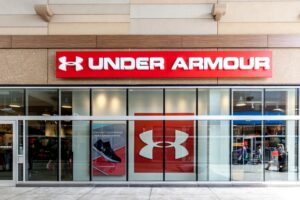

The key lesson is that all retailers need to have a robust online sales capability – period. Retailers that don’t have an online sales capability literally have no sales. The online sales experienced by Target are indicative of the move to online during this pandemic. I expect online sales will continue to be strong through the pandemic and beyond. And while this should moderate as restrictions on physical stores are removed, I do believe that COVID-19 will permanently alter buying behavior, making online sales a bigger and even more important part of the sales mix.
There is no question that retail has been changed forever by this crisis. In a current survey I’m working on 100 percent of the participants indicated this to be the case and after 20 years of surveying retail trends I have never seen 100 percent agreement on anything. I believe that the store will morph into a micro-distribution point as Bed Bath & Beyond just announced for 25 percent of their stores. BOPIS or delivery is the new normal for staple goods. Fashion will remain an in-store model for the foreseeable future but during the crisis who really cares what you’re wearing.
Target’s move into groceries and focus on rounding out its private-branded staples are paying off, even if the former is still buggy. Target is able to position itself as a worthy value option for essentials while wicking off a bit of higher-margin business in the process. Target also enjoys a rare advantage as a retailer that some customers just love to visit. Shoppers with a bit of cabin fever would be more likely to “risk” a Target visit than stores that have a narrower focus (and narrower aisles) and are more likely to throw in a few impulse items while there. Target isn’t perfect but Brian Cornell managed to lay a positive, pre-pandemic foundation that is paying off now.
While the increase of online sales does not surprise me, as noted in the article, all that glitters is not gold. Additional labor costs, having to adjust to doing business in-store (new equipment to protect workers), and clearance on items that would have sold are all hurting the large numbers. As a side note, I was in a Target yesterday afternoon – I saw the most people I had seen in the store in many weeks. Most customers were wearing masks (as were all employees) and keeping social distancing – several of the staff were continuously cleaning shopping carts.
This needs to be understood at a product category level. Online by itself is not a silver bullet. Online in non-essential categories has suffered. Any category that is not directly tied to at-home activities and needs has not done well.
Retailers and brands should recalibrate their product portfolio and procurement/supply chain strategies to accommodate different possible scenarios – recovery in Q4 2020, sometime in Q2 2021 or even 2022.
For a “one-stop shopping” retailer like Target, the return to in-store visits will happen only gradually. Online shopping will continue to gain, but not at the explosive rate of the past six weeks. The real issue for Target will be the impact of higher operating costs alongside lower sales of high-margin categories like apparel.
This is absolutely the new normal. Look for online sales (minus gas, auto and restaurants) to cross the tipping point and head to 50 percent before July. The “come back” is going to be a “crawl back,” which will keep online right in the consumer’s cross hairs. What’s really interesting is what will happen to Target’s “ship from store” philosophy in terms of e-commerce. If that works long term, it could change everything for a lot of physical stores with scale.
This will absolutely become the new normal. Target is now reaping the benefits of having a superior digital customer flow that is well-executed. Target is the prime example of where the industry as a whole is going. Digital will increase, and stores will now be front and center as the means of distribution!
It’s too early to draw any conclusions on what the “new normal” will look and feel and act like. But the last two months certainly prove that Target has been highly agile and adept at adapting to changing shopping and buying dynamics. They had the burden/luxury of staying open and the business model/skill set that adapted quickly to a whole new set of rules. At a minimum, Target has a huge head start on many other retailers in what a new retail business model is going to look like in a post COVID-19 world.
What is happening now is not necessarily the new normal, it is the new exceptional during a time of crisis and disruption. When many stores are closed and when a lot of people are social distancing at home it is unsurprising that online sales are skyrocketing.
How this trend carries forward is open to debate. However, it is sensible to look in terms of short, medium, and longer-term horizons.
Short-term: this pattern will almost certainly continue as people continue to isolate.
Medium-term: online sales will be elevated even as stores start to reopen over the next couple of months because a lot of consumers will be afraid to shop in person or will wish to limit their exposure for various reasons.
Longer-term: online sales will likely end up higher than they otherwise would have been without this crisis, but the elevated levels will subside. Why? Because a lot of current online purchasing is made out of necessity, not desire. Because many of the current online experiences are (understandably) unsatisfactory. Because a lot of people still like and actually miss going to stores.
So there will be shifts, but I am wary of any pronouncement that proclaims physical retail to be dead because of this. If anything, the store will become more important, including as a place of micro-fulfillment and delivery (curbside pickup) for shoppers.
What’s being redefined is convenience. Before COVID-19, the retail industry was begging consumers to transition to a hybrid model where digital apps are used to streamline the brick-and-mortar experience. Because of COVID-19, adoption was forced. I live on a street of retired people. None of them used online ordering/curbside prior to COVID-19 – none of them. Now they all use it and while I do foresee some store run-ins, I think most of them are enjoying weekly, organized groceries and goods delivered to their door.
There is little debate that much of the online sales boost will hold for the foreseeable future representing the next leg up for online sales.
Two key takeaways: one is the crucial need to have better integration and agility of systems and processes across store and online to deliver the right customer experience. The other is realizing that significant write-downs of inventory in apparel are necessary as well as the narrowing margins due to higher labor costs and controlled number of in-store customers throughout this summer of social distancing.
What most people thought would be a five-year shift to digital sales from brick-and-mortar is now happening at a much more rapid rate. Customers are forced to assimilate to this way of shopping and there is no looking back. “Digital first” must be top of mind for all companies going forward.
Yes, this is pretty much the new normal. And so, to actually make money at this, retailers are going to have to get very serious about investments in e-commerce delivery and also in BORIS. We can’t just keep throwing people at the problem.
Until a vaccine is found, and broadly deployed, I see store traffic minimized. Then of course, there’s the fact that grocery delivery is addictive — it’s just really easy.
With all the talk about “frictionless” checkout experiences, nothing is quite as frictionless as either having your groceries delivered or just being able to drive up and have the groceries (and other products) put in the trunk of your car for you.
It was probably inevitable anyway, but this has accelerated adoption and the requirement for enabling technologies.
Target and a handful of other retailers including, Best Buy, Home Depot, Nordstrom and Walmart have invested significantly in the digital space, omnichannel agile fulfillment, and have the infrastructure, processes, and operating model to be well positioned for retail’s new normal. The lines between digital and physical retail have been blurring for the past few years, especially with the emergence of BOPIS, integrated operating teams, and a cross channel customer experience.
We should expect for the foreseeable future that digital sales will rise, as customers seek flexible ways to buy from retailers without having to venture into the stores. Until we have clarity on the pandemic horizon those retailers, such as Target, that were ahead of the digital transformation curve, and are positioned as essential retailers, will thrive in this transitory economy.
Target and many other retailers have been fortunate to have a defined method of distribution aside from their stores. It is natural that the point of sale would shift from stores to online; Retailers have no choice when stores are closed or when people are cautious. What this forced move may have done is to make these retailers come up with enhanced, more efficient processes for distribution of online purchases. That is here to stay.
Once lockdown restrictions end people will still be afraid to go out. If you look at what has happened in China, e-commerce has grown much faster than anticipated across all sectors because of the lockdown and analysis shows that people will keep buying online. People who had never bought online – or perhaps never bought products from specific segments online – have done it for the first time and want to stick with it. Therefore any investment, or indeed market share capture, now makes a great deal of sense — it is a long term investment and needs to be evaluated that way.
The role of stores was already changing – and this will only accelerate this so they become picking locations for local orders.
China was growing fast in e-commerce pre-crisis. I’m not sure the pandemic was the trigger or if it could be applied to other markets. Store roles were definitely changing.
This isn’t just a Target phenomenon. This is the next five or 10 years squeezed into months. Shopping is all about habits. Habits are difficult to change. Our current situation has forced the change in habits and the new habits will stick for many, many people as they realize how much more convenient online shopping is compared to actually going to the store.
I believe Ken Morris’ prediction is right on target. 25 percent of retail outlets will morph into micro-distribution centers. The challenge is going to be for those small retailers that do not have online capabilities. What we will see is a new retail, with new business models, even for the smallest of retailers.
We’re seeing the payoff of a diversified portfolio of ways to separate a consumer from their money.
Seriously, we know the best players have read consumer behavior over the last 10 years and given us as many ways to shop as we like.
It’s no surprise Target has benefited from the way they do business. They consistently operate in a way worthy of consumers’ trust. In a time of crisis, it follows that consumers gravitate to them.
For years, Target has invested in e-commerce and now its strategy is paying off. Enticing assortments, e-grocery expansion and delivery partnerships all strengthen Target’s position.
“Some single days have been twice as high as Cyber Monday.” That’s bananas. It attests to the pandemic’s abrupt influence on consumer behavior. Now more consumers are choosing Target for convenience, value and speed.
Target seems to have learned that as more consumers are comfortable with online sales, it must scale to absorb them along with the shipping and store pick-up required to complete the orders. Target’s purchase of Shipt is one of the best-timed acquisitions for a retailer in recent years. Shipt has allowed Target to invest in delivery services at the right time.
As long as consumers perceive a personal threat from COVID-19, many of them will choose to buy online. However, as shoppers are allowed to venture out to open stores as states open, online sales will decline some and in-store sales will grow again at a pace shoppers are comfortable with.
Consumers are learning a new way to shop. Companies like Target are adjusting. Some of the numbers coming in are indicative of the time we’re in. In-store sales will rebound. For companies who have a strong online presence, such as Target, there are now more consumers who in the past may not have bought as much online, but now enjoy the convenience of doing so.
Consumers learn from experiences, but some experiences just don’t translate into complete allegiance and loyalty. There is no doubt that the pandemic will improve use of online, especially for grocery – but it will be a small bump, not a mass trend. Too many experiences have gone wrong – customer delays in shipping, wrong products, out-of-stocks, transport cleanliness and safety, focus on essential items and the hassle of shifting to new patterns due to the pandemic. There may be an uptick in online, and it is critical for retailers to have online operations, but there is still a long way to go before the online market gets it right for the consumer. Not the new normal yet, but influential.
Going out on a limb here, but depending on how long it takes for a vaccine or proven treatment, I expect Target and other essential retailers with large square footage to shift at least half their space to shipping and fulfillment operations. I say this because you see lines of people outside waiting their turn to enter the store (this was yesterday, six feet a part). Metering the customers allowed in the store means less shopping space is required, and there will be customers who continue to shop in person. You can’t easily sublease space to other businesses or open smaller footprint stores so you may as well re-design the space to support the new shopping experience.
Target wins hands down in the near term future of shopping and the best COVID-19 customer experience. One-stop shopping and same-day pickup, executed well. Target is genius, while other retailers and grocers take a week or more to just to fulfill orders. New shopping behaviors will live well past the pandemic, Target is the leader. For us consumers, Target is so easy, so relevant and so fun to shop! Right on Target.
We are seeing the creation of what could become the new normal. Time will tell. But it is going to be a long time before we return to a feeling of confidence with simple things like going outside for a walk; and not being afraid to stop and speak with someone without a mask on our face or fear in our thoughts.
Retail and food service normality is a long way off. So the things we are seeing will continue to be the things we expect after the fear is gone.
Our experience with Shipt (Twin Cities) has only gotten better and better over the past six weeks. Most of our grocery orders are now arriving same-day with low levels of substitution, and integration with the Target app is intuitive. Even more than Amazon, I don’t know how we could have made it this far without Target’s brilliant execution.
During normal times, Target’s sales are 93% in-store and 7% online. Based on their recent press release, the digital channel has increased 100% which means that we are still talking about roughly 15% of sales online vs. the remaining 85% which are in-store/curbside pick-up (if my math is correct here). The channel mix makes sense in an environment where social distancing is the norm. However, one of the big value propositions of Target is that it is about price-value vs. pure price which is Walmart’s appeal. For many Target loyalists, the store visit is an exploratory experience walking through the aisles to find items to add to the cart. Furthermore, for ecommerce success, big box retailers need to translate their in-store experience for online merchandising effectively. The main question is how much will the pandemic have permanently shifted the in-store-to-online ratio once going outside is deemed “safe” again?
Shikha, breaking the numbers down as you have really puts Target’s results in context — it’s remarkable that even with an extraordinary spike in online sales, their sales mix is still significantly skewed to physical-enabled transactions.
I completely agree with Jeff’s comment above, “They had the burden/luxury of staying open and the business model/skill set that adapted quickly to a whole new set of rules.” To see how this plays out for Target and other retailers will be interesting, as we watch most of the things we anticipated come to light through the numbers (ramped up e-comm, lesser focus on in-store).
One thing I do appreciate about Target is the transparency and their ongoing dedication to keep things moving as smoothly as possible during this major shift for them. Target rose to the occasion and as far as I am concerned any workers who were still working in any essential retail capacity the past six weeks are all commendable for doing so. Target though, has such loyal customers regardless of how the general population decides to change their behavior, they will continue to do so with Target.